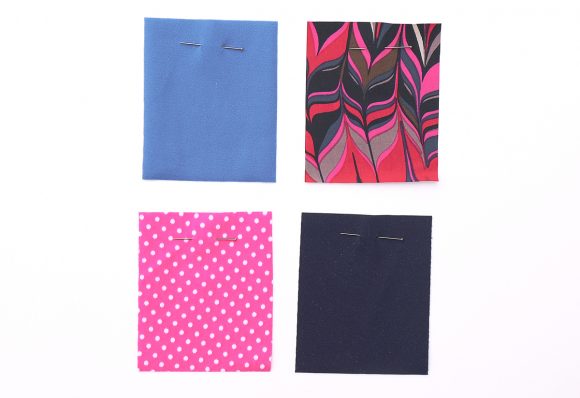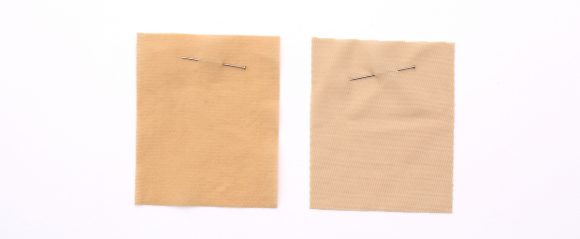Hello everyone, fellow sew-along enthusiasts! As promised, today I’ll walk you through the world of swimwear fabrics and everything else you’ll need to join in on our upcoming swimsuit sew-along, which kicks off in just a few weeks. (If you missed the full intro post for the sew-along, you can check it out here.)

**Selecting Your Fabrics**
As you probably already know, swimwear fabric is quite different from regular woven or knit fabrics. Even though it’s a knit, it dries quickly thanks to its lightweight nature and is typically made of a blend of nylon or polyester mixed with spandex for ample stretch. Lycra is essentially the brand name for spandex, which was invented by DuPont. All Lycra is spandex, but not all spandex is branded as Lycra. Does this distinction matter? It likely depends on who you ask, but I’d argue it’s not particularly significant. What truly matters is that the spandex allows the fabric to stretch and bounce back after being pulled, which is essential for maintaining the fit and comfort of a swimsuit. A high-quality swimwear fabric usually contains around 10% spandex, and that’s really all you need to know.
However, what’s critical is that swimwear fabrics should stretch in both width and length. Some folks refer to this as two-way stretch, while others call it four-way stretch. Regardless of the terminology, you need the fabric to be stretchy in both directions. When cutting your fabric, you’ll align the grain line arrows with the width of the fabric because swimwear fabrics tend to stretch more in width than in length. Many knit fabrics, such as basic cotton jerseys without spandex, primarily stretch in width and don’t offer much give in length, which is why they’re unsuitable for swimwear. Swimwear fabrics do stretch in both directions, but they stretch slightly more in width.
**Where to Find Swim Fabrics**
I must admit, the song “Itsy Bitsy Teeny Weeny Yellow Polka Dot Bikini†has always been somewhat of a bummer to me. Polka dot swimsuits are undeniably fun and adorable, but they often bring on unnecessary self-consciousness when someone inevitably starts singing the tune. This is why I’ll probably never rock a raspberry beret—though, ironically, I wore one recently to honor the memory of Prince.
That said, you either need to embrace the song or opt for a different fabric. Thankfully, there’s no shortage of options! A few of you recommended The Fabric Fairy, which I wasn’t previously familiar with, but it turns out they stock an impressive range of swimsuit fabrics in both solids and prints. They also conveniently offer bra hooks and other supplies you’ll need to create a fantastic swimsuit (more on that later).

As I mentioned when introducing the Lisette swimwear patterns, I also enjoy shopping at Spandex World and Spandex House, both of which boast an extensive collection of printed and solid spandex fabrics. Spandex House, in particular, features some unique and eye-catching prints.
And then there’s Shelley’s incredible discovery of Carvico Vita, which has now become the holy grail of swim fabrics. (Let me know if you manage to track any down!)
Choosing the perfect swimsuit fabric can be challenging. Will you go for a solid, a print, or perhaps a mix of both? Should you follow the color-blocking approach seen on the pattern envelope, or stick to a single color or print? Keep these options in mind as you shop.
For my own suits, I picked the two fabrics shown on the right in the photo above. I’m creating both the one-piece and two-piece styles, using the same fabrics. The printed pink and blue fabric was purchased at Spandex House a year or two ago, while the navy contrasting fabric came from a store in Madrid. Both suits are coming along beautifully, and I can’t wait to share the final results!
**Lining**
The pattern recommends power mesh for the lining. I absolutely adore power mesh because it retains its shape even when wet and offers a bit of support, similar to wearing compression stockings. However, regular swimsuit lining works just fine too. Here are examples of both: the regular swimsuit lining is on the left, and the power mesh is on the right, so you know exactly what to look for. The key takeaway here is that you need a lining, as swimsuit fabrics can sometimes be slightly sheer and may wear thin over time. Ideally, I’d choose a brightly colored contrast lining for my suit, but the only options available in my local store were black and beige.

**Trims**
Elastic: For both the one-piece and two-piece suits, you’ll require 3/8†and 3/4†elastic. Regular elastic will suffice, but if you’re aiming for long-lasting durability—especially if you plan to wear the suit in chlorinated pools—you might consider elastic specifically designed for swimwear. This type of elastic contains rubber and resists damage from chlorine and sunlight, ensuring it lasts longer. Clear elastic is another option, but I personally prefer cotton/rubber swimsuit elastic. It’s simply a matter of personal preference.
Needle: Use a ballpoint needle when sewing swimsuits. While an all-purpose needle can work in a pinch, it may snag the fabric and cause skipped stitches. A ballpoint needle is far gentler and safer for swimsuit materials.
Thread: Make sure to use all-purpose thread, which contains polyester and has some stretch. It’s stronger than cotton, which tends to break easily.

Boning and/or Stays: Although the pattern doesn’t explicitly mention it, most high-quality swimsuit tops incorporate a small piece of boning along the side seams. This boning prevents the suit from wrinkling or folding at the sides and enhances the overall appearance. I’ll demonstrate how to add it during the sew-along. If you wish to purchase some, look for plastic boning at trim stores. It’s affordable and can be easily trimmed to size.
Bra Hook: These come in various sizes and materials. For this pattern, you’ll need a 3/4†hook. You can find them on Etsy if you can’t locate them locally. Mine is clear, but they’re available in a variety of colors.
Pins: Some sewists advocate using ballpoint pins or pinning within the seam allowances of your pattern. Personally, I’ve never encountered issues with regular pins, but be cautious not to snag the fabric. If you’re feeling apprehensive or want an excuse to splurge on fancy ballpoint pins, go ahead—I won’t judge!
Cutting Your Fabric: I prefer using a rotary cutter when working with swimsuit fabric. It’s far easier and more precise than scissors, in my experience.
Hems and Finishes: Most of my favorite swimsuits are finished with a simple zigzag stitch, so I’ve adopted the same technique. However, if you’re keen on the twin needle method, Shelley has written an excellent post on the topic that might interest you.
And there you have it! While a serger is not essential for sewing swimsuits, having one certainly makes the process more convenient. I’ll delve into various sewing techniques during the sew-along, but for now, enjoy picking out your materials!
All set? Any questions? If not, I’ll see you back here on May 23. Can’t wait!
(adsbygoogle = window.adsbygoogle || []).push({});
Natural Green Aventurine Oval Shape Flatback Gemstones,Cabochon Top-Polished Flatback Mix Size Green Aventurine,Natural Smooth Green Aventurine
Guangzhou Qinfa Crafts Company , https://www.qinfastone.com
![<?echo $_SERVER['SERVER_NAME'];?>](/template/twentyseventeen/skin/images/header.jpg)